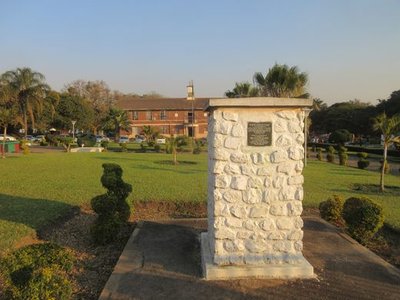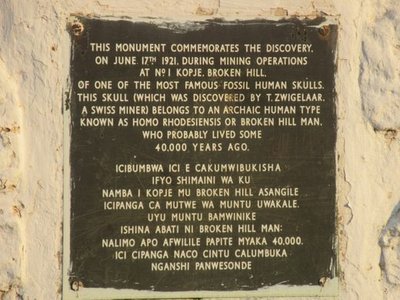'Broken Hill Man' Monument


On June 17th, 1921, a
Swiss miner working in a lead mine in modern-day Zambia came across a mostly complete skull of an ancient human.
Tom Zwigelaar was working in the Broken Hill mine in the modern-day city of Kabwe, when the country Zambia was still Northern Rhodesia.
An English paleontologist, Arthur Smith Woodward, later assigned the skull as the type specimen for a new species of hominid he dubbed
Homo rhodesiensis
. This discovery established Broken Hill as an important center for the study of early humankind.
In modern times, the skull has been dated to between 300,000 and 125,000 years old. The classification of the skull as
Homo rhodesiensis
has also largely been discarded, with the “Broken Hill Man,” as the remains became known, generally classified as
Homo heidelbergensis
.
The skull itself currently resides in the Natural History Museum in London. Zambia, however, has made efforts to repatriate the fossil. In the meantime, a monument to the discovery of the Broken Hill Man has been erected on the grounds of the Civic Center in Kabwe. The plaque on the monument is written in both English and Bemba.